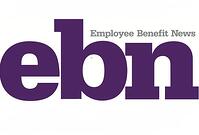By Spencer Williams | January 4, 2023
 The passage of the Securing a Strong Retirement Act of 2022 (known as “SECURE 2.0”) reinforces the bipartisan commitment in Congress to helping Americans save more for retirement. Signed into law as part of a $1.7 trillion omnibus spending bill signed by President Biden on December 29, the legislation includes a variety of provisions, including the expansion of automatic enrollment in 401(k) and 403(b) plans. Fortuitously, SECURE 2.0 measures related to auto portability come shortly after the launch of an industry initiative to make auto portability—a technology solution that can operate in tandem with auto enrollment to optimize plan participants’ retirement outcomes—much more accessible to plan sponsors across the country.
The passage of the Securing a Strong Retirement Act of 2022 (known as “SECURE 2.0”) reinforces the bipartisan commitment in Congress to helping Americans save more for retirement. Signed into law as part of a $1.7 trillion omnibus spending bill signed by President Biden on December 29, the legislation includes a variety of provisions, including the expansion of automatic enrollment in 401(k) and 403(b) plans. Fortuitously, SECURE 2.0 measures related to auto portability come shortly after the launch of an industry initiative to make auto portability—a technology solution that can operate in tandem with auto enrollment to optimize plan participants’ retirement outcomes—much more accessible to plan sponsors across the country.
In October 2022, three of the largest retirement plan recordkeepers announced the creation of a consortium of workplace retirement recordkeepers. The consortium, Portability Services Network, LLC (PSN), was established in collaboration with Retirement Clearinghouse, LLC (RCH) to function as an industry utility for automatically moving 401(k), 401(a), 403(b), and 457 account balances of under $5,000 from plan to plan at the point when participants change jobs. Also included in SECURE 2.0 is a provision that raises the limit for mandatory distributions from $5,000 to $7,000, thereby expanding auto portability’s benefits to a larger population.
PSN will utilize the auto portability solution developed by RCH to build a digital, nationwide hub connecting retirement plan recordkeepers and sponsors. Auto portability is the routine, standardized, and automated movement of an employee’s retirement savings account with less than $5,000 from their former employer’s plan into an active account in their current employer’s plan. This innovation was created to resolve two ongoing challenges for the U.S. retirement system—the proliferation of small (under $5,000) accounts from terminated participants in employer-sponsored plans, and the tremendous leakage of retirement savings every year.
According to the Employee Benefit Research Institute (EBRI), approximately $92 billion in savings leaves the nation’s retirement system annually. The reason? Because too many Americans who switch employers choose to prematurely cash out their retirement savings accounts, and pay taxes and penalties on those early withdrawals. Why? Because plan-to-plan asset portability has historically been expensive and time-consuming without help, and cashing out is often viewed as the simplest option by participants when they leave their jobs for new employment.
By automating and simplifying plan-to-plan savings portability at the point of job-change, auto portability makes it possible for participants to consolidate their retirement account balances throughout their working lives. EBRI estimates that, if adopted nationally, over the course of a 40-year period auto portability would preserve an additional $1.5 trillion in savings (measured in today’s dollars) in the U.S. retirement system. This sum would include $619 billion for 67 million Black and minority workers, and $365 billion for 42 million women participants.
According to a case study focusing on a large plan sponsor in the healthcare services sector, undertaken by Boston Research Group, the use of auto portability resulted in a 48% increase in the average account balances of the sponsor’s plan participants.
Making businesses and institutions that sponsor retirement savings plans for employees aware of the benefits of auto portability presents an easy opportunity for financial advisors and wealth managers to demonstrate value for their clients—and grow their practices.
To learn more about how plan sponsor clients can benefit from auto portability, advisors can visit https://info.rch1.com/request-psn-info.
Back
 1916 Ayrsley Town Boulevard
1916 Ayrsley Town Boulevard